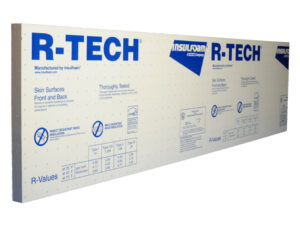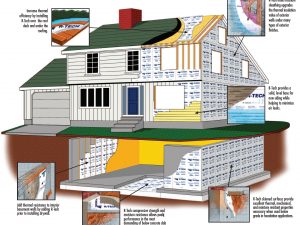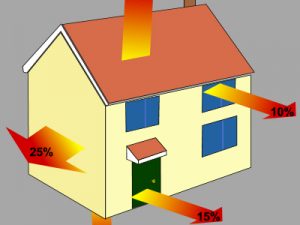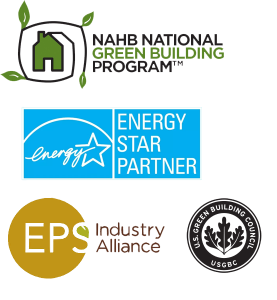Increase Energy Efficiency with Continuous Insulation on Exterior Walls
Almost overnight, leaves announce the changing of seasons as they turn from green to soft shades of orange and red. Summer warmth gives way to 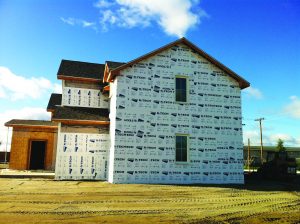 crisp fall air. At the first morning chill, a homeowner’s instinct may be to turn up the thermostat.
crisp fall air. At the first morning chill, a homeowner’s instinct may be to turn up the thermostat.
But before reaching for the switch, it’s worth considering whether there’s a more long-term solution that is being overlooked. Often, the culprit for drafty homes or a flux of room temperature can be attributed to poor insulation within the building envelope.
Creating continuous insulation (ci)—insulation that is continuous across all structural members without thermal bridges other than fasteners and service openings—on exterior walls remains one of the most important steps homeowner’s can take to not only eliminate a fall chill, but to lower their monthly electricity bill. To achieve ci, homeowners can turn to expanded polystyrene (EPS) as an external wall insulation solution. The material’s customizable nature and high R-value makes it possible to create a nearly impenetrable building envelope that keeps heat in and reduces the need to flip on the thermostat.
So, before the summer weather gives way to cooler days—we encourage homeowners to think about adding EPS wall products (like Insulfoam’s ENERGY STAR® certified R-TECH) to their home’s exterior. After all, a surprisingly high heating bill is no way to welcome the changing of seasons.
EPS’ customization and high R-value offers external wall ci solution
A homeowner’s answer to achieving ci and optimizing energy-efficiency is to build a virtually airtight envelope by eliminating thermal breaks in the exterior wall system. Manufacturers support this venture by producing EPS blocks in large sizes to cover an expansive wall. With such a large span, there are going to be fewer air gaps and reduced thermal bridging from fewer connections. Structural framing members such as studs and joists conduct heat much more readily than does building insulation, resulting in a substantial path for heat loss. By covering greater surfaces with far less gaps and restricting the amount of air that flows through, the energy required to heat or cool a space can drop drastically. In turn, buildings stay cooler in the summer months and retain warmth in the fall and winter.
Secondly, EPS’ high R-value— its resistance to conductive heat flow—also plays a role in reducing a homeowner’s heating expenses. Typically, the higher a material’s R-value, the greater its insulating effectiveness. Superior insulation translates to superior energy efficiency, meaning, homeowners will get the best bang for their buck in terms of dollars spent on heating and cooling. The best part? EPS doesn’t off-gas and leave the cellular structure over time, so its R-value will remain stable over its lifetime.
With an increasing amount of industry testing on EPS performance, it’s more apparent than ever that exterior wall insulation is critical to ensuring ci. And, in achieving ci, homeowners will reap the benefits EPS affords, such as lower heating bills. Interested in learning more about how EPS products can serve your home? Visit www.insulfoam.com.

